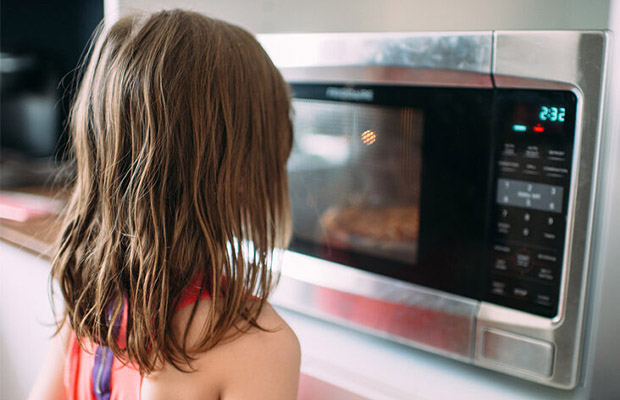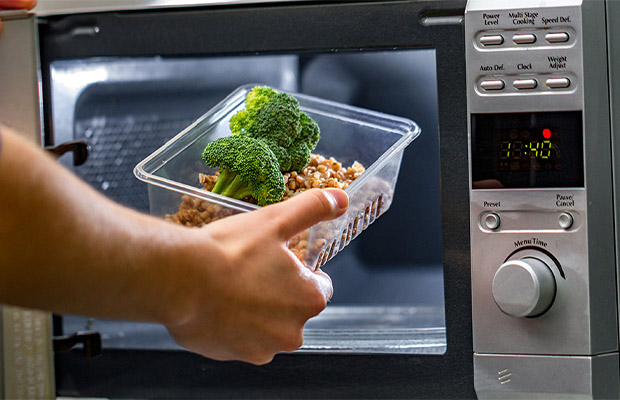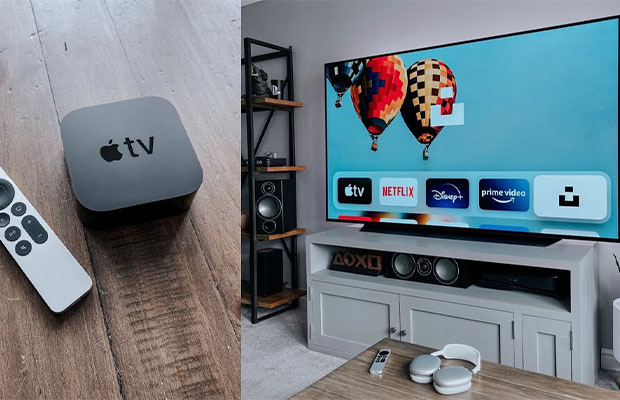Home appliances like microwaves are widely used, but how hot does a microwave get? And is there a danger of being burned?
The maximum effective temperature that food or liquids can reach in a microwave is 200 degrees Fahrenheit, or the boiling point of water.
Although water can be heated in a microwave to 248 degrees Fahrenheit, this poses a serious risk of scalding if the container is handled without taking appropriate safety measures.
The truth about microwave temperatures will be examined, and a thorough explanation of how microwaves operate will be given in this blog post.
You’ll be able to choose your next microwave wisely if you have this information at your disposal. Stay safe and enjoy!
Table of Contents
How Do Microwave Ovens Work?
In contrast to thermal heat transfer, all microwave ovens heat food by converting electricity into microwaves.
The current is directed to a magnetron, a device with a metal chassis that uses electricity to send high-frequency waves (microwaves, as opposed to low-frequency radio waves) into the cooking compartment of the oven. A high-voltage capacitor is used to convert the high voltage to standard home voltage.
For your food to be cooked, defrosted, or reheated, those waves heat the polar water molecules in food or liquids. Aside from the food compartment, no part of the microwave oven gets hot, in contrast to the majority of conventional ovens where heat transfer occurs from the oven to the food.
This also implies that component failures, like non-functioning buttons on microwave control panels, are typically caused by electrical problems, like shared circuit overload. Additionally, it implies that the primary determinant of cook times is the amount of water in the food being cooked.
Read More: Microwave Not Heating Up
What is the Highest Temperature a Microwave Can Reach?
Have you ever wondered what the maximum temperature a microwave can reach is? The solution, however, might surprise you.
It’s critical to comprehend how microwaves operate in order to provide a response to this query. In order to heat food, microwaves use electromagnetic waves.
These waves are produced by the microwave unit and then transmitted to the food. The waves cause the food’s water molecules to vibrate, which produces heat.

What is the highest temperature a microwave can achieve then?
The answer is: it depends on a few different factors, such as the size of the microwave and the power of the microwave. The temperature increases as the power increases.
The maximum temperature of the majority of microwaves is close to 100 degrees Celsius, or the boiling point of water.
Some models can, however, withstand higher temperatures of up to 200 degrees Celsius.
Household microwaves typically have a power of around 700 watts. The maximum temperature that results from this is roughly 100 degrees Celsius.
However, some commercial microwaves can have a power of up to 3,000 watts. These microwaves can reach temperatures of up to 250 degrees Celsius.
What Affects the Temperature in a Microwave?
There are numerous variables that can impact temperature in microwaves. Here are some of the most common:
1. Wattage of Your Microwave
The wattage is one factor that influences a microwave’s temperature. The temperature will rise as the wattage increases. The size of the microwave is an additional factor that impacts temperature. A larger microwave will have a higher temperature than a smaller one.
2. Type of Food You’re Heating
The temperature can also be impacted by the kind of food you’re heating. For instance, it will take longer to reheat a frozen pizza than it will to reheat a cup of coffee.
Meats, for example, require cooking at a higher temperature than other foods.
3. Moisture Content of the Food
The amount of water in the food can also impact its temperature. Wetter foods will be hotter than dryer ones. Water conducts heat well, which explains why.
4. Size and Shape of the Food
The temperature of the food can also be influenced by its size and shape. A small item, like a slice of pizza, will heat up more quickly than a large item, like a Thanksgiving turkey.
5. Temperature of the Food
The amount of time needed to reheat food depends on its initial temperature. Reheating a slice of cold pizza will take longer than reheating a slice that has already been heated.
6. Container You’re Reheating the Food In
The temperature of the food can also be impacted by the container it is being reheated in. For instance, food will heat up more slowly in a ceramic dish than in a glass dish when being reheated.
7. Time and Power Setting
The temperature is also affected by the time and power settings. Something will be hotter if it is microwaved for a longer time than if it is microwaved for a shorter time.
The power setting is the same. The temperature of the food will increase as you use a higher power setting as opposed to a lower one.
7. Environment
The temperature can also be impacted by the surroundings. For instance, food will take longer to heat up in a cold room than it will in a warm one.
These are a few of the more typical factors that can impact the temperature. With a little practice, you’ll quickly become an expert at reheating food. Therefore, keep these things in mind if you’re planning to reheat something or make something from scratch.
Read More: How Long To Defrost Chicken In Microwave?
What Does Your Microwave Do When It Gets Too Hot?
There may be serious issues if your microwave becomes overheated. The food might begin to cook on its own if the microwave’s interior temperature rises too much. As a result, the food may burn or even catch fire.
The microwave starts to smoke while you’re still cooking something in it. Alternatively, you may open the door and discover that the food is almost completely burned. What’s going on?
It turns out that your microwave actually enters a safety mode to stop further damage when it becomes too hot. Here’s what happens:
1. Microwave Turns Off.
This is the first line of defense. The microwave will automatically shut off if it detects that it is becoming too hot.
2. Fan Turns On.
The fan’s purpose is to assist with microwave cooling. The fan will turn on and start moving air once the microwave has stopped operating.
3. Door Locks.
To keep you from opening the door while the fan is running, this security feature is in place. If you did, the hot air that is blowing around inside might hurt you.
4. Display Flashes.
Informing you that the microwave is in safety mode, the display will flash a warning message.
5. Beeper Sounds.
As long as the microwave is in safety mode, the beeper will occasionally chirp to alert you.
The microwave will automatically reset once it has cooled down, allowing you to use it once more.
So, if your microwave ever starts smoking or your food burns, don’t freak out!
Just be aware that it has switched to safety mode and will return to normal after cooling down.
There may be serious issues if your microwave becomes overheated.
Microwaves have the potential to start breaking down food, release dangerous chemicals, and even start a fire if the temperature inside the oven rises above the safe level.
How Can You Prevent Your Microwave from Getting Too Hot?
You can take a few steps to keep your microwave from overheating.
Utilizing caution when using your microwave is the best way to keep it from becoming overheated. Verify that you are using the recommended cookware and adhering to the recommended cooking times.
It’s always better to err on the side of caution if you’re ever unsure. Put an end to the microwave and check the food if you suspect it may be overcooked. Having to reheat your food is preferable to running the risk of starting a fire.
- First, make sure to clean it regularly. This will assist in removing any buildup that might make the microwaves absorb more quickly.
- Second, don’t reheat food for more than the recommended time. This will aid in avoiding overcooking the food.
- Third, avoid using plastic containers. When these get too hot, they may release chemicals into the air.
- Finally, be sure to unplug the microwave if it starts to smoke or smell funny. This will aid in stopping the spread of a fire.
You can reduce the risk of your microwave overheating and causing damage to the food you’re reheating by keeping in mind these suggestions.
You May Also Like:
- How Long To Defrost Chicken In Microwave?
- Can You Microwave Chipotle Bowl?
- Can You Microwave Parchment Paper?
FAQs
What is the Average Temperature of a Microwave?
Rarely are the contents of a microwave oven much hotter than 100 degrees Celsius (212 degrees Fahrenheit). Due to its transparency to microwaves, cookware used in a microwave oven frequently has a much lower temperature than the food it is heating. The cookware is indirectly heated by the food.
Can You Put Metal in a Microwave?
In a microwave, metal should never be placed. As a result, sparks may fly, possibly igniting a fire. The best course of action is to refrain from using your microwave with metal cookware.
Can Radiation Or Microwaves Linger in Food?
No, this is a persistent urban myth similar to the one that gamma rays cause mutations despite a long time since the scientific community came to a consensus. According to the World Health Organization, microwave ovens behave similarly to light bulbs in that they completely stop emitting electromagnetic radiation when turned off.
Can You Boil Water in a Microwave and Should You?
The boiling point of water (212 degrees Fahrenheit) is the highest temperature that can be reached when cooking in a microwave, so the answer is yes.) Since electromagnetic waves don’t emit radiation into the water, generally speaking, it is just as secure as any other method of boiling water.
Should a Microwave Get Hot on the Outside?
Although the body or outside cabinet of a microwave can occasionally warm up while steaming food, it should never actually get hot because, unlike with conventional cooking, the food is the only thing heated while the microwave is in use.
The use of your microwave should be avoided if it becomes hot while operating because this could indicate a potentially dangerous electrical problem. In this case, call a repairman.



MOST COMMENTED
How to
How to Clean Homedics Humidifier: Detailed Guide
How to
Are Humidifiers Good for Pneumonia? Complete Guide
How to
Can You Put Drano in a Dishwasher? (Facts & Safe Alternative)
How to
How to Turn Subtitles on Or Off on Peacock TV: 2023 Guide
How to
How to Get Rid of Hollow Arrow on iPhone? 2 Simple Ways
How to
How to Mirror iPhone to TV Without WiFi: Complete Guide
Computers, Tablets & Printers
The 5 Best Printers for Cricut in 2022